If you live in Australia and want to travel with your dog, the best option is to travel domestically within Australia. Thanks to the strict quarantine laws for getting your dog back into Australia, not to mention the expense, heading overseas with your dog is often unfeasible.
Not that your options in Australia are that narrow, thanks to this vast and varied continent. And while limited accommodation options, transport restrictions and pets being banned from nearly all national parks makes travelling with a dog more difficult than in other parts of the world, travelling with your dog in Australia can still be very rewarding, whether for a weekend away or a longer trip.
I’ve travelled extensively with my dog in Australia, from short day trips and road trips from my home in Sydney to a Big Lap with my dog all the way around the country for six months. I’ve camped in a campervan, stayed in pet-friendly cabins and lived it up in luxury pet-friendly hotels. Along the way I’ve learnt plenty of tips to share with you…
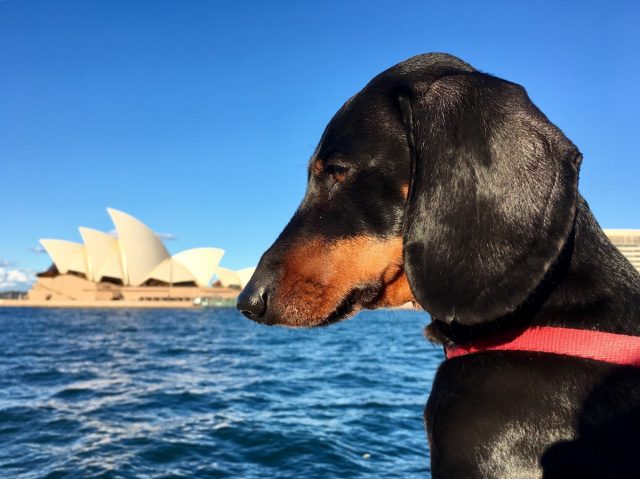
Travelling Between Australian States with a Dog
If you’re travelling with your pet across state and territory borders, be aware that some biosecurity rules may be in place. Just as you may not be allowed to transport fruits and vegetables across the border, extra checks may apply for transporting your dog.
The latest rules (which can change from time to time) are downloadable in a PDF from the Australian Interstate Quarantine website. Currently, there is only one state with a requirement for transporting dogs to the state, Tasmania. (And no restrictions at all for crossing state borders with a cat.)

Before dogs travel to Tasmania, whether on the Spirit of Tasmania or on a plane, they must be treated for the hydatid tapeworm. This needs to be done within 14 days of entry to Tasmania. Evidence can include an official statement from your vet, a statutory declaration or a pill packet and receipt. For more information, see this factsheet.
Additionally, since the outbreak of the tick-transmited Ehrlichiosis disease in northern Australia, on the same form, you also need to declare that you have inspected your dog for ticks.
I’ve sometimes seen references to quarantine applying for Western Australia, but there are currently no restrictions or quarantine for pet dogs and cats travelling to WA, as listed here.
Note, however, if you are travelling to some of the territories of Australia located overseas, such as Norfolk Island or Christmas Island, extra requirements may apply.
Driving Around Australia with a Dog
The best way to travel around Australia with your dog is in your own vehicle. There’s a great tradition of doing the Big Lap, and many people take along their dog (including myself!), finding dog-friendly options along the way.

Alternatively, if you’re just going away for the weekend, it’s also easiest if you can drive your own car. There’s no restrictions or extra fees, and your dog should already be used to and comfortable with travelling in your car.
For long distance travels in Australia, it’s easiest and cheapest if you have a campervan, campertrailer or caravan, so that you can take advantage of the free camp sites around the country. (Which also usually don’t have rules prohibiting dogs.)
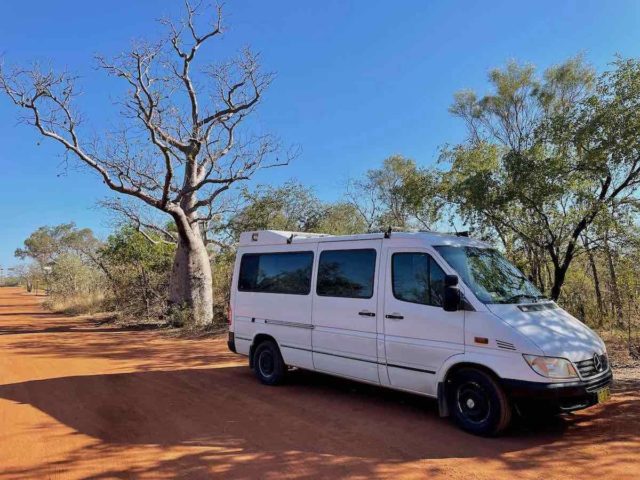
Taking along a regular tent may also be an option, but the ground at free campsites isn’t always suitable ground for pitching tents, and you’ll more likely need to camp at caravan parks, paying fees and being restricted to parks that permit dogs.
Check out my guide on camping around Australia for more information, plus my guide on dog-friendly road trips. I’ve also put together specific guides if you are driving along the Hume, driving from Sydney to Brisbane or driving from Adelaide to Darwin with your dog.
Hiring a Car in Australia with a Dog
If you don’t have your own car, or are firstly flying somewhere with your dog, you may be planning to hire a car. This is a great option for taking a road trip with your dog, especially if you don’t own a car. However, be aware that most hire car companies in Australia have restrictions when it comes to transporting dogs in their cars.

There are a few hire car companies that outright ban dogs in their vehicles. However, with some other companies it is up to the individual location. Before hiring a car, call the branch that you are planning to hire from, and speak to the manager. Naturally, of course, cars are expected to be kept free of pet hair, or at least returned free of pet hair.
For more details, including the policies of the major companies and lots of tips, read my post on hiring a car in Australia with a pet.
Hiring a Campervan in Australia with a Dog
Rather than a car, you could also consider hiring a campervan. Travelling with a campervan will make it far easier to find somewhere dog-friendly to stay the night, whether the many caravan parks in Australia that allow pets on sites, or even free camping spots.
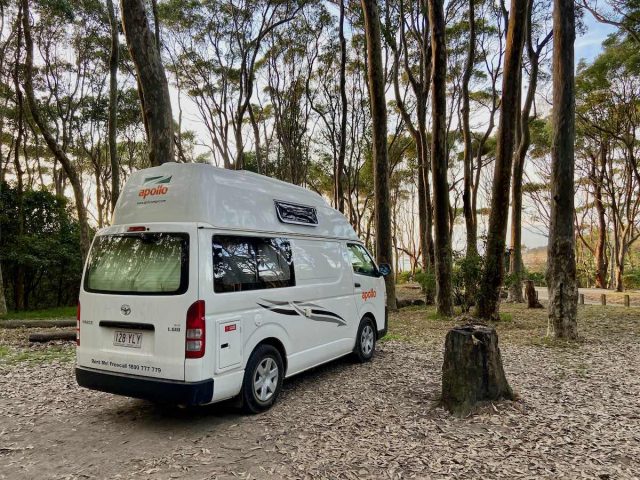
Some, but not all, campervan hire companies in Australia permit pets in their motorhomes and campervans, for an additional fee. To find out more, check out my guide on how to hire a pet-friendly campervan in Australia.
Flying in Australia with a Dog
Given the size of Australia, it’s often quickest to get to your destination by flying. Dogs are permitted to fly with you in Australia, although there are of course restrictions, with generally pets only allowed to fly with you in the hold.
In recent years, the Australian aviation rules changed to permit pet dogs to fly in the cabin (in addition to recognised assistance dogs). This will bring Australia in line with many other parts of the world where this is already a common occurrence, such as Europe and the USA, although it’s up to the individual airline.
Virgin will soon start allowing pets in the cabin, although initially only on a few selected routes. Like in other countries restrictions will apply – it’s not a free for all! Your dog will need to be small enough to fit in a carrier bag underneath the seat in front of you. There is also a weight limit of 8kg for the dog and carrier combined, similar to most European airlines. Read my extensive guide to the Virgin pet in cabin policy.

The most common option in Australia is for pets to be allowed to fly in the hold. This is possible on flights operated by Qantas (including Qantaslink, via Qantas Freight), Virgin Australia and Regional Express (REX). Note that the discount airlines Jetstar does not transport pets at all.
Note that your pet will need to travel in an approved flight crate. Crates are available for purchase from major pet stores, pet transport companies plus directly from Qantas, at major domestic airports. Or you can hire a create if you are using a pet transport company.
For more information on flying with your dog, check out my very detailed guide to flying with a dog in Australia.

Catching Long-Distance Trains in Australia with a Dog
In general, pet dogs are not permitted on long distance trains in Australia. Great Southern Rail, which operates the famous long-distance trains including The Ghan and Indian Pacific, does not permit pets. NSW Trains and Queensland Rail also clearly prohibit pets.
The main exception is V/Line in Victoria. Small animals, including both cats and dogs, are permitted to travel on all V/Line train services (but not coach services), as long as they travel in a suitable container. The container must be stored in an assigned storage location, and transport during off-peak periods is recommended. For more information, see here.
Local Transport in Australia with a Dog
Whether your dog is allowed on local public transport in Australia depends on what state you are in. Public transport is organised by each state government, so the rules vary between each state.
The most dog-friendly state in Australia when it comes to public transport is Victoria, by a long shot! Public Transport Victoria allows small dogs in a container to travel on all trains (both metropolitan and the regional V/Line train services, see above), trams and buses in the state.

Additionally, larger dogs are allowed on metropolitan trains, if they are wearing a leash and muzzle. The only non-dog-friendly services are V/Line coaches. For more information, see my guide to pets on public transport in Melbourne.
The next most dog-friendly state is New South Wales. Small dogs in an enclosed carrier are allowed on government-run buses, light rail and ferries, although you need to ask permission from the driver/crew and ideally avoid peak hour. (I often catch buses with my dog for weekend outings.)
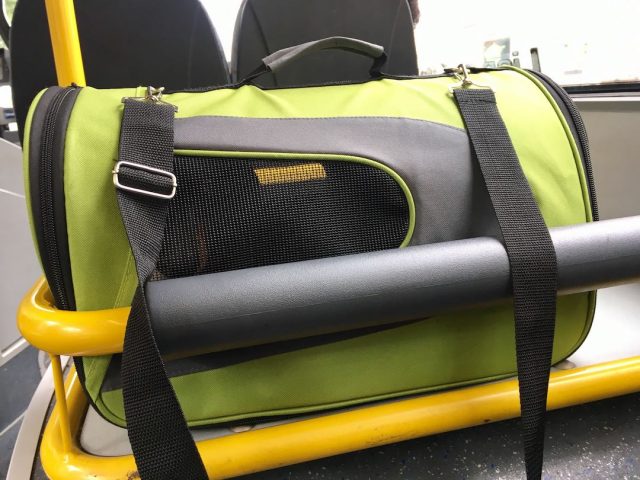
However, no dogs of any size, not even small dogs in a carrier, are allowed on the state’s trains, plus the new metro lines or coaches. Check out the full rules.
The Australian Capital Territory has similar rules to those in NSW. The latest rules stipulate that pets are allowed on both light rail services and buses, as long as they are in a secure pet carrier and, in the case of buses, if you ask permission off the driver. Here are the relevant rules.
Finally, Queensland permits dogs to travel on Brisbane River ferries and CityCats. Both small and large dogs are permitted, either in an enclosed carrier or wearing a leash and muzzle, on the outside deck. Note that they aren’t permitted during peak hours. See more details in my guide to dogs on public transport in Brisbane.
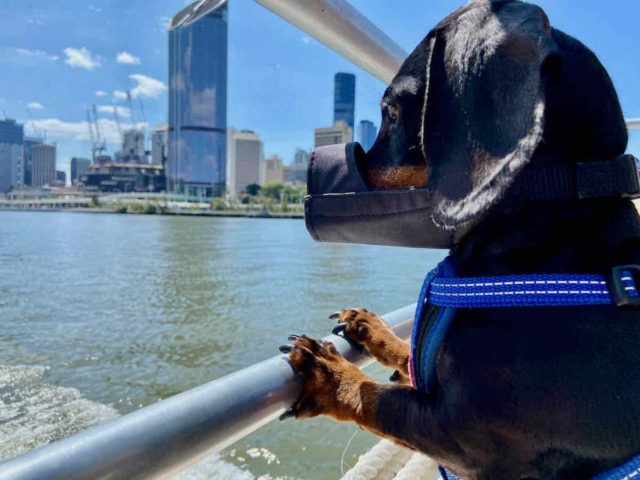
Elsewhere in Australia, unfortunately pet animals are not allowed on public transport, except for approved assistance animals. As an alternative, consider booking an Uber Pet ride. Available in most Australian cities for slightly more than a standard UberX trip, selecting this option means the Uber driver is happy to transport your dog.
Dining Out in Australia with a Dog
Luckily one area where Australia is more dog-friendly than many parts of the world (including many states in the USA and provinces in Canada) is in allowing dogs to join you in outdoor dining areas.
There is a single regulator for all of Australia and New Zealand, Food Safety Australia & New Zealand, and in 2012 they changed the rules to permit dogs in the outdoor dining areas of cafe and restaurants.

There is still the caveat that individual cafes and restaurants may choose to not allow dogs, so always check first unless dogs are clearly allowed. Plus additional rules usually apply. For instance, in NSW the rules state that dogs must be leashed, not be fed, stay on the ground, and not pass through enclosed areas to reach the outdoor area.
While dogs are not allowed in inside dining areas unlike in some parts of the world, luckily the weather is warm enough most of the year across Australia to dine outside, and during chillier weather many restaurants and cafes provide outdoor heaters.
There are also some pubs in Australia that permit dogs inside, but this is a bit of a grey area, and there have been crack-downs at times. This is more likely to apply in the front bar, and strictly exclude indoor dining areas. For recommendations of pubs that allow dogs inside, check out this list for Sydney and this list for Melbourne.
Dog-Friendly Accommodation in Australia
When it comes to dog-friendly hotels in Australia, the selection is limited, although fortunately growing. The most likely hotels to permit dogs tend to be boutique and luxury hotels in the cities, plus small country motels run by an independent owner.
While most chain hotels in Australia previously didn’t permit pets, a growing number of hotel chains are pet-friendly. Ranging from luxury brands to apartment hotel chains, usually the pet policy is consistent between all properties. The greatest number of options are in the capital cities of Sydney, Melbourne, Brisbane and Perth.
Note also that some dog-friendly hotels don’t publicise this on third-party booking sites, only accepting direct bookings. Even if a hotel does mention it allows pets on a third-party booking site, it might be best to contact them directly, as often only specific rooms allow dogs, plus there might be weight restrictions and usually always a fee.
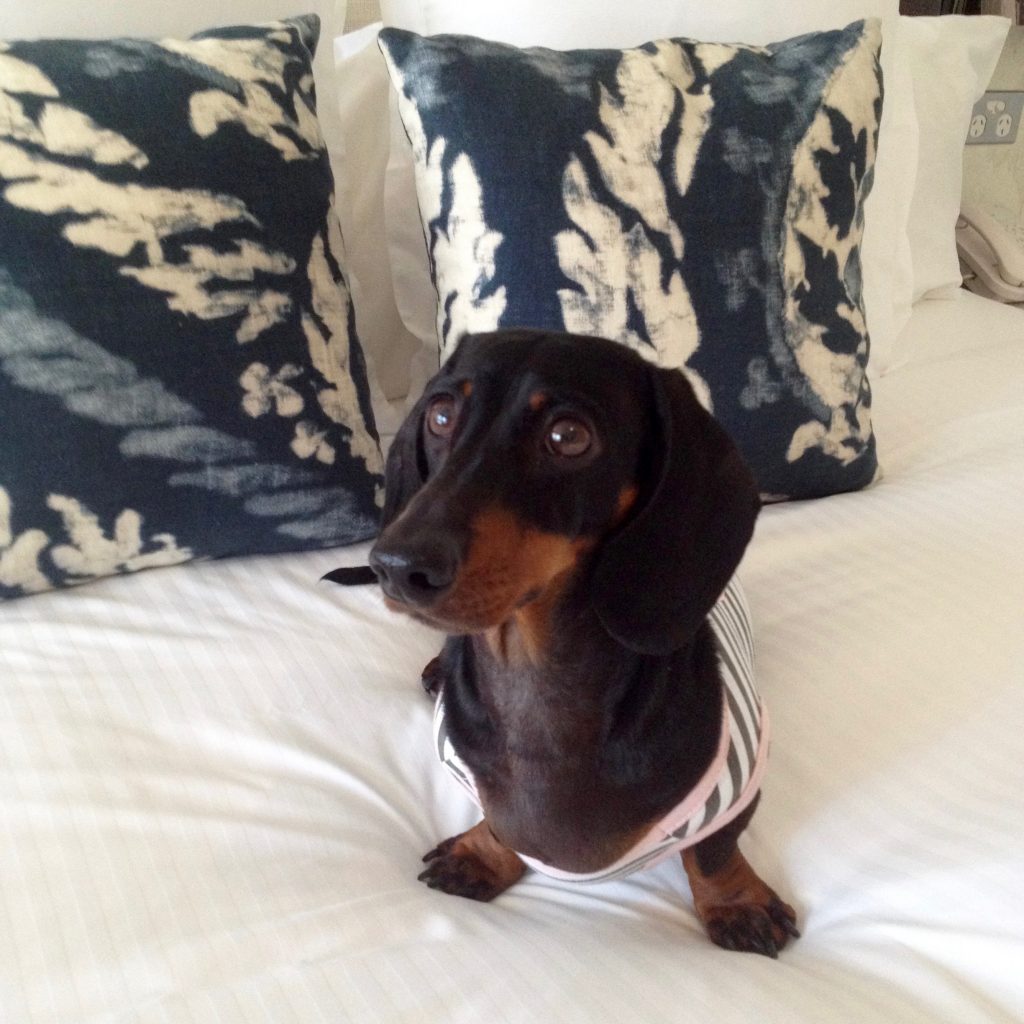

A much more popular accommodation option in Australia for people travelling with dogs are the many caravan parks. A fair number of caravan parks in Australia permit pets, although this is often restricted to people staying in their own caravan or tent, perhaps in selected sites only.
The number of caravan parks that allow pets in their cabins is smaller, although the number is growing. Also keep in mind that many caravan parks in popular coastal regions stop allowing pets during the peak summer holiday period.
If you are travelling with your own campervan, caravan or tent, free campsites may also be an option. As well as not costing anything, these locations tend to not have many rules. Unfortunately, the cheap or free campsites in national parks are not an option, as dogs are prohibited in nearly all national parks (see more below).
Check out my post on how to find dog-friendly camping in Australia, from caravan parks to free camp sites.
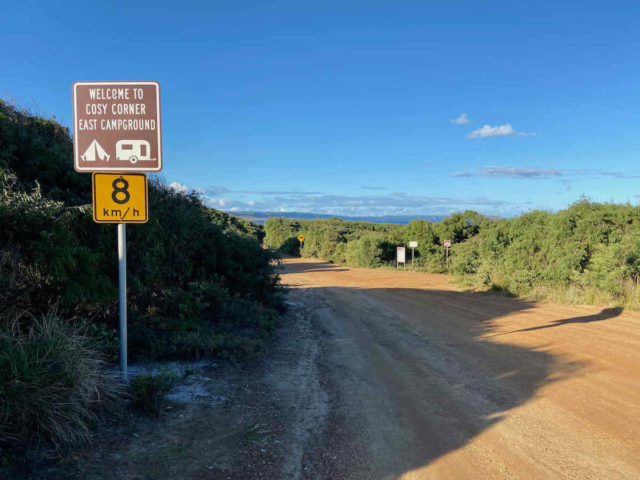
If you like the idea of camping with your dog but don’t have your own tent, consider one of the dog-friendly glamping tents around Australia, ranging from basic to luxe.
Another option to consider are Airbnbs. We’ve stayed before in dog-friendly Airbnbs in Sydney. Check out my step-by-step instructions on finding and staying in pet-friendly Airbnbs.
For some dog-friendly accommodation recommendations around Australia, check out these posts:
Pet-Friendly Hotels in Australia
- Dog-Friendly Hotels in Sydney
- Pet-Friendly Hotels Along the NSW Coast
- Dog-Friendly Hotels in Melbourne
- Dog-Friendly Hotels in Brisbane
Dog-Friendly Caravan Parks in Australia
- Dog-Friendly Caravan Parks in Australia with Fenced Sites
- Dog-Friendly Caravan Parks in Australia with Off-Leash Dog Parks
- Extra Dog-Friendly Caravan Parks in NSW
- Extra Dog-Friendly Caravan Parks in Victoria
- Extra Dog-Friendly Caravan Parks in QLD
- Extra Dog-Friendly Caravan Parks in SA
- Pet-Friendly Caravan Parks in Adelaide
- Extra Dog-Friendly Caravan Parks in WA
Pet-Friendly Cabins in Australia
- Best Dog-Friendly Cabins in NSW
- Best Dog-Friendly Cabins in Victoria
- Best Dog-Friendly Cabins in QLD
- Pet-Friendly Cabins on the Gold Coast
- Best Dog-Friendly Cabins in SA
- Best Dog-Friendly Cabins in WA
- Best Dog-Friendly Cabins in Tasmania
Dog-Friendly Campsites in Australia
- Best Dog-Friendly Campsites in NSW
- Best Dog-Friendly Campsites in Victoria
- Best Dog-Friendly Campsites in QLD
- Best Dog-Friendly Campsites in SA
- Best Free and Cheap Dog-Friendly Campsites in WA
More Pet-Friendly Accommodation in Australia
- Dog-Friendly Places to Stay in Victoria
- Dog-Friendly Places to Stay in South Australia
- Pet-Friendly Places to Stay on the Sunshine Coast
- Pet-Friendly Stays in the Granite Belt
For something different, have you considered hiring a houseboat? To find a houseboat hire company that permits dogs onboard, check out my guide to dog-friendly houseboats in Australia.
Dog-Friendly Sightseeing in Australia
Many of Australia’s top sights are located inside of our country’s many national parks (of which there were a huge 619 when I last checked!) And unfortunately, pets are strictly forbidden inside of nearly all Australian national parks.
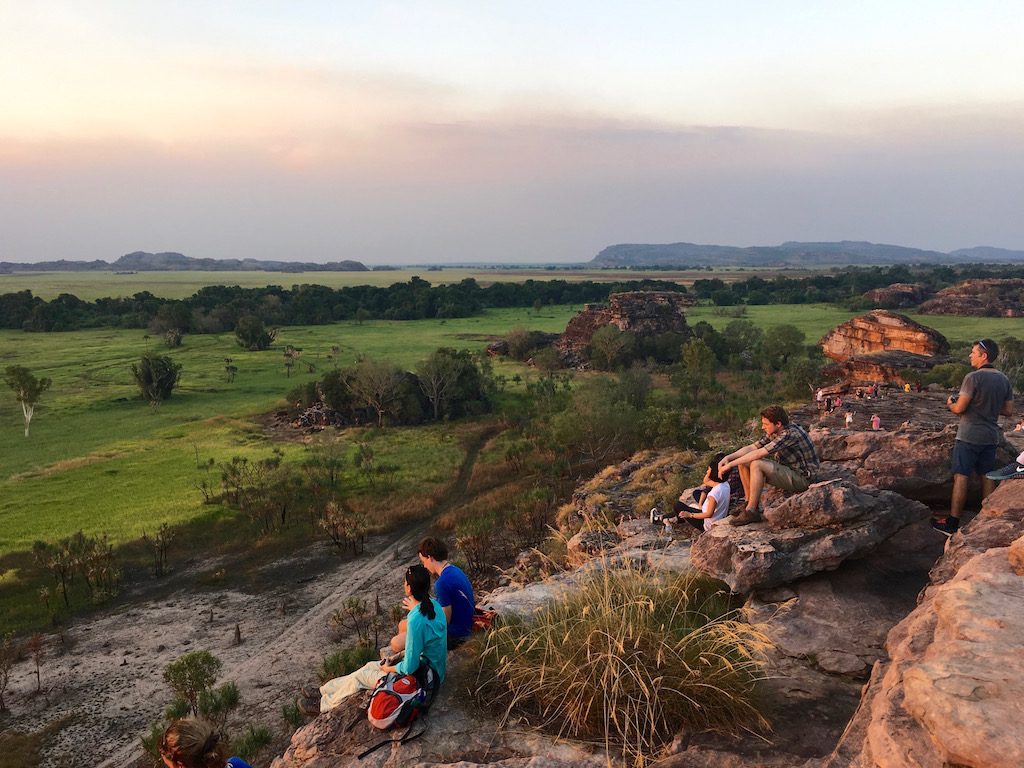
These are the rules for parks in NSW. As well as being banned from national parks in NSW, pets are also banned from state conversation areas, nature reserves, historic sites and Aboriginal areas in the state. This even applies if you leave your pet in your car, unless you need to drive through a park to access private property, in which case you are not permitted to stop.

So, what sightseeing can you do with your pet dog in Australia? These are some suggestions:
- State Forests & Other Parks: While pet dogs are not allowed in national parks, pets are generally allowed in state forests. Plus in NSW pets are allowed in some regional parks and state parks (click here), similar rules probably apply to other states. Investigate your options as an alternative to national parks, then head out hiking with your pup.
- Beaches: Australia is home to endless beaches, enough to share between everyone. Many beaches permit dogs, especially outside of the cities. Check out my lists of the best dog-friendly beaches in NSW, Queensland and Victoria.
- Explore the Cities: While not the first option most people think of when it comes to dog-friendly places, wandering around our cities on foot is ideal to do with a dog. In Sydney, walk along the harbour foreshore. In Melbourne, visit the Botanic Gardens. In Brisbane, walk along the Brisbane River.
- Wineries: Every state in Australia contains so many excellent wineries, many that allow dogs to join you when wine tasting, plus at outdoor dining areas. I’ve included suggestions for pet-friendly wineries in my guides. Or else contact the wineries you are planning to visit.

In particular, check out my list of the most dog-friendly destinations in Australia, all with plenty of fun dog-friendly things to do with your pup. I’ve also put together some more great listings for dog-friendly activities in Australia:
- Dog-Friendly Boat Cruises in Australia
- Dog-Friendly Historic Train Rides in Australia
- Dog-Friendly Snow Destinations in Australia
- Dog-Friendly Walking Tours in Australia
- Dog-Friendly Fruit Picking in Australia
- Dog-Friendly Shopping Centres in Australia
And if you’re just wanting to let your dog run around off-leash at the park, but with the security of knowing it’s fenced (especially when you’re far from home), check out these dog parks:
- Best Fenced Dog Parks in NSW
- Best Fenced Dog Parks in Victoria
- Best Fenced Dog Parks in Queensland
- Best Fenced Dog Parks in South Australia
- Best Fenced Dog Parks in WA
Keeping Your Dog Safe
There’s a long list of things that you need to keep your dog safe from while travelling in Australia, especially if you’re heading to remote areas. Even close to home, there’s still the risk of ticks and snakes, not to mention 1080 poison. To find out more, check out my guide on how to keep your dog safe while travelling in Australia.
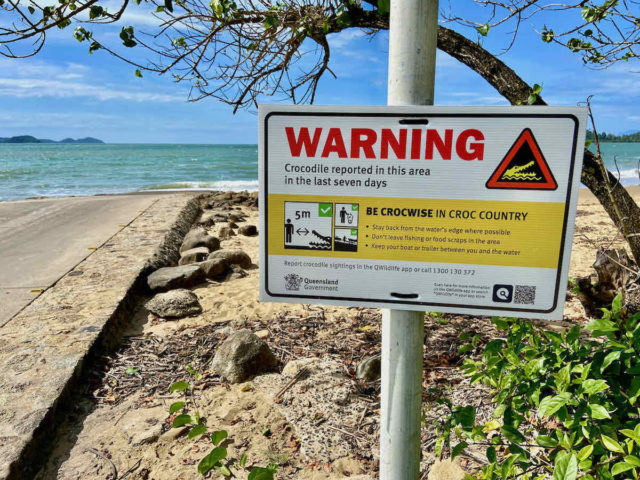
To help mitigate the risks, consider packing a pet first aid kit and taking a pet first aid course. Keep the number of a local emergency vet handy, or find out about the options for consulting a vet online.
Using Kennels & Dog-Sitters
As many tourist attractions in Australia aren’t dog-friendly, including if you’re wanting to visit any national park, many people travelling Australia with dogs make use of kennels and dog-sitters on their travels.
Firstly, there are many kennels scattered around Australia, where your dog can stay overnight or just for the day. Often local vets can provide listings if you can’t find any options online. Alternatively, there are multiple websites these days that provide listings for dog-sitting in people’s home.
Another option is to speak to other travellers that also have dogs. I’ve often heard of people taking turns looking after each other dogs. Noticeboards and receptions at caravan parks are also a good place to check for options.
Dog-Friendly Guides to Australia
I’ve put together a huge number of dog-friendly guides to different destinations across Australia. Check out my guides to each state, with tips on what to do plus links to all the guides to cities and regions within that state:
- Dog-Friendly Canberra (and ACT)
- Dog-Friendly New South Wales
- Dog-Friendly Northern Territory
- Dog-Friendly Queensland
- Dog-Friendly South Australia
- Dog-Friendly Tasmania
- Dog-Friendly Victoria
- Dog-Friendly Western Australia

About the Author

Shandos Cleaver is the founder of Travelnuity: Dog-Friendly Travel. She has travelled extensively with her Miniature Dachshund, Schnitzel, including to 33 countries across Europe, every state and territory of Australia except Tasmania, and 10 of the United States. She’s passionate about providing inspiration and information to others wanting to travel with their dogs, whether close to home or internationally.
Inspired? Pin this to your Pinterest board!


Great post, loved the information you shared..
Thanks!
Super info, thanks. Thinking about Aussie travel with our AKKs (mini huskies). They’ve traveled around the US by plane but our travel dropped way off due to so many restrictions in AU.
(Ps: typo – “ Most chain hotels in Australia don’t permit hotels, except for the luxury boutique brand Ovolo, who in 2019 announced their VIPooch program.”
I think the second “hotels” should be “dogs”)
Thanks for picking that up, I’ve now fixed it. Australia has a lot more restrictions than the USA for travelling with dogs, but it’s still doable, especially if travel in a campervan or caravan.